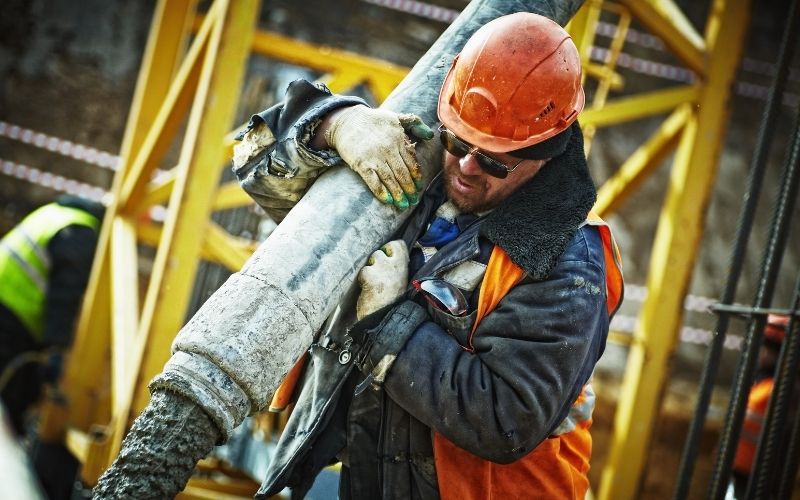Whether an office setting is new to you or you have worked in one for a while, you may be curious to know what ergonomic hazards are and how to prevent them.
Ergonomic hazards are factors in your environment that negatively impact the musculoskeletal system. Hazards are present when you are sitting at a desk or moving items around in an office. Carrying files, pushing or pulling heavy objects, or working overhead can cause harm to your musculoskeletal system.
If you are curious to learn about ergonomic hazards and ways to prevent harm to yourself while working, then you’ve come to the right place. We explain what ergonomic hazards are, give you examples to look out for, and ways to prevent these hazards from happening to you.
Table of Contents
What is the Ergonomic Hazard?
Ergonomic hazards are any interactions with your surroundings that cause user discomfort or strain. They are not always obvious which makes them hard to detect.

We need to pay close attention to ergonomics. When you work long hours in a day and your body remains in a stressed and awkward position, it can harm your musculoskeletal system. Working in extreme temperatures or doing repeated movements can also cause damage.
Over time, your body begins to display symptoms. Here are some symptoms to look out for:
- Discomfort
- Pain
- Fatigue
- Weakness
- Stiffness
- Sensitivity
- Burning sensation
- Tingling
- Drowsiness
- Difficulty moving
- Clumsiness
Whether you work from home or at your company’s office, becoming aware of these symptoms is important to your long-term health.
The symptoms listed above can be caused by three primary types of ergonomic hazards: environments, systems, and objects that lead to poor posture or uncomfortable, awkward, or unnatural movements.
Although most employers seek ways to prevent these ergonomic hazards, they can’t prevent everything. It is up to us to make sure we use good posture and apply other methods to prevent our bodies from harm.
What are the Examples of Ergonomic Hazards?
There are many examples of ergonomic hazards that are preventable. The key is to understand what these hazards are, so we can be more vigilant if we are doing them.

Here is a skimmable list of examples of ergonomic hazards:
- Frequent heavy lifting
- Overhead work
- Pushing or pulling
- Poor prolonged posture (like slouching or leaning back)
- Improperly adjusted workstations and chairs
- Awkward movements, especially if they are repetitive
- Using too much force, especially if it’s done frequently
- Vibration
With our skimmable list of examples, let’s dive deeper and give you more specific examples to look out for.
Frequent and Heavy Lifting
A great example of heavy and frequent lifting could be picking up heavy printer paper boxes. Maybe at home or the office, you need to transport heavy boxes up and down the stairs to store them in a cabinet or use the printer.

Another example could be frequently lifting a walking desk treadmill and placing it underneath your desk. If you like to alternate between sitting and walking at your desk, then this may be a hazard to be aware of.
A way to prevent strain on your body when lifting could be keeping your printer paper box storage cabinet on the same level as your printer or taking multiple trips with lighter loads.
To prevent ergonomic hazards with a walking treadmill desk, increase the increments that you use your walking treadmill. Instead of walking on the treadmill every twenty to thirty minutes, stretch that time frame to every other hour. You can also leave your treadmill on the floor instead of picking it up and laying it against your office wall.
Overhead Work
Many construction workers and professional painters deal with this ergonomic hazard. They are required to look up to drill nails into boards or spackle ceilings.

This ergonomic hazard is difficult to prevent, however, the negative effects caused by this activity can be reduced. Modify work practices and give your body a break.
Instead of looking up for ten minutes, give yourself a break every two minutes. Stare straight ahead and let your spine and head be in a neutral position for a minute.
Pushing or Pulling
An occupation that deals with a lot of pushing and pulling are firefighters. They push and pull stretchers with or without patients on them and they pull fire hoses.
A terrific way a firefighter can prevent injury and lessen the ergonomic hazard could be to request another firefighter to help push or pull with them.

If you sit in an office with a chair with wheels, then you might like to pull yourself towards your keyboard or push yourself away every time you stand up from your chair. These movements are an example of ergonomic hazards, especially if you do them frequently.
A way you can prevent this hazard could be alternating between pushing yourself away using your legs and your arms. You are using different muscle groups which can give your body a break.
Poor Prolonged Posture
Jobs that require you to stand all day may cause you to lean on one side, causing your hips to misalign. Examples of jobs that may require you to stand for most of the day are cashier sales associates, occupational therapists, surgeons, restaurant hostesses, and high school teachers.

Prevent bad posture by paying more attention when you lean or shift your weight to one leg. Try to keep your weight evenly balanced between both your feet. On breaks, sit down and get off your feet.
Improperly Adjusted Workstations and Chairs
Improperly adjusted workstations and chairs are a common ergonomic hazard many office workers struggle with. If you sit at a desk for most of your workday, you may not realize how much your body slouches over a computer.

To prevent this, set the top of your computer screen to eye level and make sure your chair is at a proper height that prevents you from slouching. Get yourself a footrest to keep your thighs parallel to the floor and prevent your hips from tilting forward.
Awkward Movements
Awkward movements can be unnaturally twisting your body to reach something on the far corner of your desk. If you have a large desk, you could be reaching too far and contorting your body which can cause harm to your spine.
To prevent an awkward movement such as this one, you can turn your entire chair to face your body towards the object you want to retrieve. This will lessen the amount of spinal twisting and awkward movements you do in a day.
Using Too Much Force
Jumping, running, or other movements that put force on your joints is an ergonomic hazard. Some examples of jobs that may use too much force are professional dancers, powerlifters, and marathon runners.

Give yourself a recovery period. Instead of back-to-back marathon races, give yourself a week’s break. If you are a powerlifter, take longer rests between sets.
Vibration
The first occupation that comes to mind is construction workers who deal with high-powered tools or equipment that vibrate. Take frequent breaks from the tool or piece of equipment you are using to lessen the side effects of this ergonomic hazard.
Summary
Now that you understand what ergonomic hazards are and you have a list of examples, you can pay more attention to day-to-day hazards. You can prevent unnatural and awkward positions before they cause unnecessary injuries.
Look carefully around your environment and correct any ergonomic hazards you find. A comfortable and injury-free person is a happy person. Have a safe workday!

My name is Vance, and I am the owner of To Ergonomics. Our mission is to improve your workflow by helping you create a supportive and welcoming environment. We hope that you’ll find what you’re looking for while you’re here.

